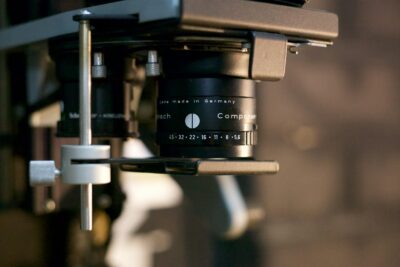Optimizing Performance with Nano-Engineered Surfaces
Introduction to Nano-Engineered Surfaces and Friction Reduction
In the realm of mechanical systems, the development of nano-engineered surfaces has emerged as a transformative approach to reducing friction and enhancing performance. By leveraging nanotechnology principles, engineers and researchers can modify surface properties at the nanoscale, leading to significant improvements in efficiency, durability, and reliability. From industrial machinery to automotive components, the integration of nano-engineered surfaces holds immense promise for overcoming friction-related challenges and optimizing the functionality of mechanical systems. In regions like Saudi Arabia and the UAE, where technological innovation is a driving force for economic growth, the adoption of nano-engineered solutions is reshaping the landscape of engineering and manufacturing.
Nano-engineered surfaces are designed to minimize frictional forces by introducing tailored surface features and coatings that alter the interaction between contacting surfaces. These surfaces, often characterized by ultra-smooth textures and advanced material compositions, exhibit reduced adhesion and wear, resulting in lower energy consumption and longer component lifespan. In mechanical systems such as bearings, gears, and sliding mechanisms, nano-engineered surfaces offer superior tribological performance, enabling smoother operation and enhanced efficiency. Moreover, the application of nano-engineered coatings can mitigate issues related to corrosion, contamination, and lubricant depletion, further enhancing system reliability and maintenance intervals.
The Advantages of Nano-Engineered Surfaces in Friction Reduction
The adoption of nano-engineered surfaces for friction reduction brings numerous advantages that contribute to the overall performance and longevity of mechanical systems. One key advantage is the ability to tailor surface properties to specific application requirements, allowing for customized solutions that address unique frictional challenges. By controlling surface roughness, chemistry, and morphology at the nanoscale, engineers can achieve precise levels of friction reduction while maintaining compatibility with existing components and manufacturing processes. This versatility enables the widespread adoption of nano-engineered surfaces across various industries, from aerospace and automotive to renewable energy and biomedical devices.
Furthermore, nano-engineered surfaces offer enhanced resistance to wear, abrasion, and fatigue, leading to extended service life and reduced maintenance costs. By minimizing friction and wear, these surfaces contribute to energy savings, improved operational efficiency, and lower environmental impact. In sectors such as transportation and manufacturing, where friction-related losses account for significant energy waste, the adoption of nano-engineered solutions can lead to substantial improvements in resource utilization and overall sustainability. Additionally, the use of nano-engineered surfaces promotes innovation and competitiveness by enabling the development of next-generation technologies with superior performance and reliability.
Challenges and Future Perspectives
Despite the promising advancements in nano-engineered surfaces for friction reduction, there are challenges that must be addressed to maximize their impact and adoption. One challenge is the scalability and cost-effectiveness of manufacturing nanostructures and coatings at large scales. Researchers and industry stakeholders need to invest in scalable fabrication techniques and materials synthesis methods to overcome these barriers and make nano-engineered solutions economically viable for mass production. Additionally, there is a need for standardized testing protocols and performance metrics to evaluate the effectiveness and reliability of nano-engineered surfaces across different operating conditions and environments.
Looking ahead, the future of nano-engineered surfaces in friction reduction is filled with opportunities for innovation and growth. As researchers continue to explore new materials, design strategies, and manufacturing processes, we can expect further advancements in friction reduction technology. In Saudi Arabia, the UAE, and other global hubs of technology and innovation, stakeholders are investing in research and development initiatives to harness the potential of nano-engineered surfaces for diverse applications. By fostering collaboration and knowledge exchange, we can accelerate the adoption of nano-engineered solutions and drive positive change in the field of mechanical engineering.
Conclusion: Harnessing Nano-Engineering for Friction Reduction
In conclusion, nano-engineered surfaces represent a paradigm shift in the field of friction reduction, offering a pathway to improved performance, efficiency, and sustainability in mechanical systems. Through precision engineering and materials science, engineers can leverage the unique properties of nanomaterials to minimize frictional losses and optimize the functionality of machinery and equipment. From reducing energy consumption and maintenance costs to extending component lifespan and enhancing operational reliability, nano-engineered surfaces offer tangible benefits across industries and sectors. By embracing innovation and investing in nano-engineering research, we can unlock new possibilities for friction reduction and drive technological progress towards a more efficient and resilient future.
—
#nanoengineeredsurfaces #frictionreduction #mechanicalsystems #materialsscience #innovation #SaudiArabia #UAE #Riyadh #Dubai #technology























